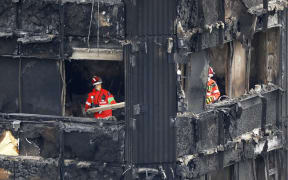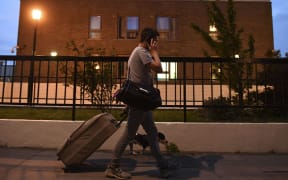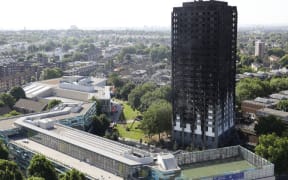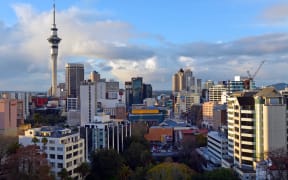The number of UK high-rise buildings found to have cladding that failed fire safety tests has been expanded to 60, the government has said.

The Burnham residential tower block on the Chalcots Estate in north London, where five residential towers have been identified as having combustible cladding. Photo: AFP
There are plans to test the fire resistance of cladding on up to 600 buildings following the Grenfell Tower fire in North Kensington on 14 June.
The fire led to the deaths of 79 people.
The Department for Communities and Local Government said all buildings examined so far had failed the test.
Councils were told to prioritise buildings they had most concern over.
Not all the buildings affected had been named.
Separately, cladding is to be removed from nine tower blocks in Salford while two buildings in the town of Bootle also had cladding that failed tests.
In New Zealand, similarly combustible cladding has been found on two buildings in Auckland, while tests are just starting to get under way in other main centres.
The update came as Camden Council said it had told about 200 residents still refusing to vacate four of its tower blocks on the Chalcots estate that they "must leave" to allow improvement works to go ahead. The majority of the residents of the four buildings were evacuated on Friday night.
Camden Council leader Georgia Gould said officials would visit residents still in their homes, as they required them to leave the blocks before work on making the buildings safe could begin.
She said there were "various legal routes that Camden Council could explore. However, we really don't want to do this".
The cladding on the buildings in the Chalcots estate is similar to Grenfell Tower where the fire is feared to have killed at least 79 people.
Chalcots was refurbished between 2006 and 2009 by the same firm, Rydon, that oversaw work at Grenfell Tower in 2015-16.
'National disaster'
The government testing programme began on 21 June with the local authorities asked to submit cladding for examination.
Speaking on BBC Radio 4's The World This Weekend, Lord Kerslake, the former head of the civil service who who now chairs the Peabody housing association in London, called for the process to be accelerated.
"We are told they can do 100 a day - that should be the number they are meeting," he said.
He added: "This is clearly a terrible national disaster and demands a national response. As well as the public inquiry on the lessons learned we need to establish where the areas of the highest risk are and take action immediately. That's been a priority for me."
The Local Government Association (LGA) said some councils have introduced 24-hour warden patrols to mitigate the risk before cladding is removed.
It said in a statement: "Where cladding fails the test, this will not necessarily mean moving residents from tower blocks.
"In Camden, the decision to evacuate was based on fire inspectors' concerns about a combination of other fire hazards together with the cladding."
The LGA said it was advising councils still waiting for results of tests to prepare contingency plans "so they can take any measures needed quickly".
- BBC





